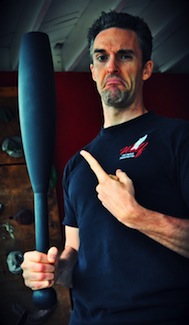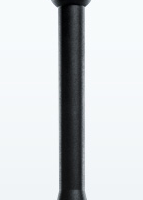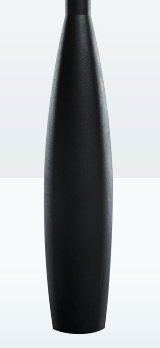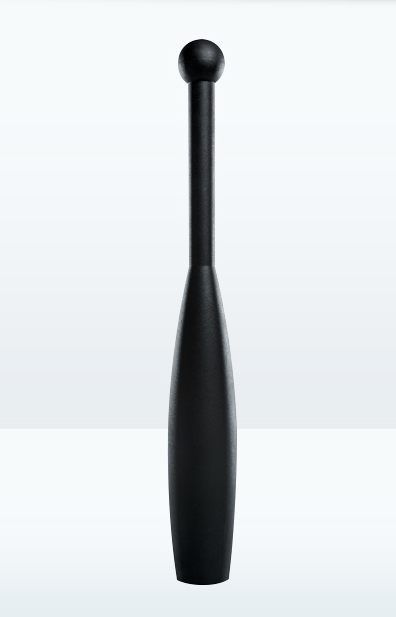 Onnit Steel Clubs couldn’t have come at a better time.
Onnit Steel Clubs couldn’t have come at a better time.
The awareness of Club training in general (of which Onnit Steel Clubs are one version of the tool used) is starting to reach a wider audience on a new scale. A journey which, while similar to that of bringing the Kettlebell to the masses, has had to travel a longer arc to get here.
But people are starting to see, feel and experience the incredible benefits that Club training has to offer on a broader scale. And they are getting hungry for more. When a hunger like that starts to grow, there needs to be accessibility to the tools that will let us hunt/harvest, prepare and eat our “food”. Which in turn feeds the ongoing growth of the utilization of this incredible tool. Along with all the benefits to be derived from using it.
Breathing New Life into Training with Steel Clubs
The Onnit Steel Clubs are breathing a fresh, and much needed, new energy into that growing awareness and accessibility. And they are doing it with quality.
Now I’m not a “product reviewer”. I’m a content producer, a resource provider, a coach, a motivator, a supporter, an igniter of your Life Evolution. It just so happens I’ve got a very special relationship with Club training, that includes extensive experience using them myself and teaching others to do the same to a high level. I’m a strong proponent for their incorporation into the training that you do. Not exclusively, but as an incredibly valuable addition to the greater picture. It is from this place, this perspective (and a few solid weeks of putting the Onnit Steel Clubs through their paces) that I write this review.
With that, let’s get to the nuts and bolts as we look at, the Onnit Steel Clubs:
1. The Knob
 The ball or “knob” on the end of the Club performs an important function in the utilization of this dynamic tool.
The ball or “knob” on the end of the Club performs an important function in the utilization of this dynamic tool.
The majority of the movements performed have the Club either pushing or pulling through our grip, as opposed to pushing or pulling against it (the way tools such as the Barbell, Dumbbell and Kettlebell do).
This increases the potential for a Club to slip… or fly… out of our hands when dynamic force is being applied (swinging), as our grip fatigues or sweat makes it slick. The knob on the end provides a key purchase point against our pinky which provides the backstop for avoiding such occurrences to take place (along with safe training practices of course).
The knob on the end of the Onnit Steel Clubs is a great shape and gives solid purchase. It’s only draw back is that it is a little too big. This works fine when doing any kind of Casts or Presses. It actually feels great when doing these, due to the large contact surface. But as soon as we get into swinging the Club, whether as the primary movement or as a transitionary one that requires us to bend our wrist to point the Club (like pointing a sword), a large knob causes that bend to be excessive. Over time and after many reps, it could begin to cause some wrist problems.
It also starts becoming limiting to those who can use it comfortably. At its current size, with relatively large hands, I’m at the outer edge of being able to comfortably handle the wrist bend. For anyone with small hands (which includes most women) that would be very noticeable. And we would not want to limit that accessibility. With a skill based focus that is strength building and mobility increasing while incredibly empowering to wield, I see women in fact becoming champions for Club training on a grander scale.
Outside of a change in size, the shape and powder coat Onnit has applied makes the knob’s intended functionality very good.
2. The Grip
 The texture of the grip on a Club is probably the most pivotal of aspects to using it safely and effectively. It is also the hardest to get right. So much so that the best grips to date have even been replaced over time by less ideal solutions.
The texture of the grip on a Club is probably the most pivotal of aspects to using it safely and effectively. It is also the hardest to get right. So much so that the best grips to date have even been replaced over time by less ideal solutions.
Because of the nature of Club training and the constantly changing grip relationship to it, depending on where in space the Club is at any given second or what stage of a movement it is travelling through, there needs to be a minimally textured, comfortable surface for the hand to move along. Otherwise our hand will start to get torn up. Torn up hands are not conducive to ongoing, consistent training.
At the same time, there needs to be SOMETHING. Most attempts at creating a Club that I have either seen or come into contact with, have NOTHING. Just a glossy finish that makes the Club look really… nice. Problem is, it also turns the Club into an extremely dangerous projectile. Because the instant we start to sweat, which doesn’t take long, it causes our contact surface to become very slippery and difficult to hold on to. And when exponentially greater degree’s of force are being applied and we can’t hold on, well, you get the picture.
It’s not just about the potential danger either. If within a short period of time, we can’t safely hang on to our Club, then it limits our ability to train with them. Kind of defeats the purpose.
So a fine balance is required to get the grip right for optimal traction.
With Onnit Steel Clubs, they have hit it right on the mark. Onnit’s chip resistant powder coated finish meets that fine balance with flying colors, making it the best grip on a Club currently out there.
Not only that, they’ve covered the whole Club with it which opens the possibility for more diverse functions in how the Club is used.
3. The Main Body
 Now this is an interesting one. While going back to a much more original design, Onnit has come with a wholly creative and unique application to heavy/steel Clubs. You see, the main body has a bowling pin shape. This bowling pin shape is much more reminiscent of an old style of wooden Indian Clubs. And it is the first time it has been used in the modern heavy/steel Club design. All other versions have a graded cone widening out to a long cylindrical end.
Now this is an interesting one. While going back to a much more original design, Onnit has come with a wholly creative and unique application to heavy/steel Clubs. You see, the main body has a bowling pin shape. This bowling pin shape is much more reminiscent of an old style of wooden Indian Clubs. And it is the first time it has been used in the modern heavy/steel Club design. All other versions have a graded cone widening out to a long cylindrical end.
I was curious to see (and not totally convinced upon first viewing them) how that shape would affect:
- absorbing into a parked position on the shoulder
- moving through the space behind and beside the head
- parking it on the floor when placing it down
- For the shoulder park, it’s actually more comfortable than the straight side of the cylinder. The curve in the end of the Steel Club causes it to sit very comfortably on ones trapezius. It marry’s to the natural curve of that musculature nicely. So no problems. If anything, it got better.
- The look of the bowling pin shape gives off the perception of being wider around the middle. That perception can easily give the impression that the incident of hitting our head, when moving the Club beside our head or most especially behind our head, to be much higher. When in actual fact it’s not that wide at all. It just has more tapering on either end which gives that illusion.
Case in point, my 45 lbs Onnit Steel Club is narrower, at it’s widest point, than an older 35 lbs cylindrical styled Club that I have.
- Surely with that tapering on the end, it won’t serve to effectively park the Club upright on the ground, right? Surprise, surprise. No problems at all. Parks very solidly without any wobble.
A bold move by Onnit to step outside the established norm for heavy/steel Clubs to make it their own. And it worked great.
4. The Flat Bottom
Something no one will ever accuse you of if you take advantage of the full body conditioning benefits Steel Clubs have to offer. 😉
This is the surface on the end that Steel Clubs get “parked” upright on. Urethane and neoprene coverings have been used on other versions, which make them much more friendly for indoor wood surfaces or floors (like training studios, yoga studios, school gyms, your house). Those covers also serve to take the edge off should you accidentally nick your head during a movement. Don’t worry, this is actually quite rare (besides the fact it only takes once to make sure you never do it again). On the other hand they can get oily and give off a bit of a smell when sweaty; the covering can bubble and peel; not as resilient to the elements outside; less stable when parked on rougher surfaces.
Onnit Steel Clubs are just that: Steel Clubs. Machined from a single piece of steel, which anytime you can do that increase its durability/safety/longevity exponentially, the end is steel itself with a bit of an edge. You need to be more gentle on surfaces that easily scratch, but they are much more stable (less chance of getting feet, children or pets wacked by a falling Club) and allow you the option to access the incredible training it offers in any environment.
5. Overall Length
 Okay, okay, we’re just going to get this out of the way with right here and now. Despite all the jokes that could be made about “it’s not how long it is, it’s how you use it.”, length of Club actually has a significant impact on the training effect we derive from using it. It’s a leverage tool after all. The shorter or longer the lever, the more of a change in our relationship to moving it through the myriad ranges around our body.
Okay, okay, we’re just going to get this out of the way with right here and now. Despite all the jokes that could be made about “it’s not how long it is, it’s how you use it.”, length of Club actually has a significant impact on the training effect we derive from using it. It’s a leverage tool after all. The shorter or longer the lever, the more of a change in our relationship to moving it through the myriad ranges around our body.
Going too short on a heavy Club, takes away from the benefit we could be getting from it.
Onnit Steel Clubs have indeed gone shorter than the Clubs I’m used to using. Again, I wasn’t so sure about how well this would translate in the training, because I have tried other variations that are quite short and they don’t translate well when using them for full body conditioning.
As of this review, I’ve trained with the 25 lbs and 45 lbs Steel Clubs. And although they are shorter… they’re not too short. They actually feel pretty good. I trained with them quite comfortably, the weight distribution feeling well balanced. And by that I mean sufficiently off balance, the weight being where it needed to be.
Invariably the shorter length does change how heavy a 25 and a 45 feel. They don’t feel quite as heavy as what 25 lbs and 45 lbs feel on what I have trained with regularly. But the biggest factor with that is because there is less off-center leverage to overcome. It is that very factor that makes wielding the heavier weights that much more difficult for most people.
At the length Onnit has gone to for these, I actually see that becoming less of an obstacle for many. Not because the weight feels lighter, but because the lever is more manageable. Which means more access for more people to heavier Club training, which should be part of the whole package. I’m into that. And all without losing on the benefits of training with a decent length Club.
Here is where the challenge is going to be: the 10 lbs and 15 lbs. While I haven’t worked with them yet (being familiar with the lengths of their heavier ones), their measurement puts them on the “too short list”.
For 5 lbs, no problem. Those will work great at their current length. For 25, 35 and 45 lbs, they went a bit shorter, but it works really well and could in the end give even greater accessibility of heavier weights to more people.
The thing with the 10 and 15 lbs, however, is that they are THE key weights for people starting out with Club training. Transitioning into Club training is not as straight forward as going from Dumbbells to Kettlebells. You need a manageable weight to get comfortable with how one moves a Club and moves in relationship to it. And the 25 lbs Steel Club is too heavy to do that with.
Does it mean the 10’s and 15’s are a write-off? Not at all. There is still alot you could do with them at their current length. It’s just that at those lengths, they start being limited in what you can do with them and their effectiveness for what you COULD be getting out of them.
Onnit has so much going for them in all that they have done with their Steel Clubs, thereby the access they are creating to Club training for the masses. It would be unfortunate to see that minimized with the weight categories that are, and will be for most, the entry point into Club training.
Hike those up closer to the 25 pounder, and it will change the story dramatically.
6. Price Point
Another obstacle that tends to make us hesitant. Yes, even though we are willing to drop hundreds of dollars on other more familiar items, bought through infomercials, that will never see the outside of a closet or become a piece of decorative furniture.
But this is the the very tough seal to crack when bringing something unfamiliar to a broader audience. In general, if we don’t know what it is, then we don’t really understand the value and are thus less willing to take a risk on it, especially if we are going to feel it in our pocket.
Onnit is making another bold move by making these very high quality pieces of equipment more affordable. Assisting us to make the leap into another adventure in our training. And I commend them for it. For bringing in a more enticing price point, while not sacrificing on the quality.
Final Thoughts on Steel Clubs
After the heavy/steel Club’s original iteration, there have been attempts to bring alternatives to the market. Unfortunately they have fallen well short of the mark, keeping a single stand out far in the lead.
Onnit Steel Clubs are more than well on their way to changing the game.
- They have made a commitment to bring a high quality tool.
- They have made strong choices, standing for their own ingenuity and pushing the field of Club manufacturing to get BETTER.
- They are not simply adding this dynamic tool to their repertoire for unconventional fitness, but crashing down the doors for a much broader audience to take advantage.
Onnit Steel Clubs are up there with the best. I like them alot for the many reasons stated. With some improvements on the points touched on above, while maintaining their current price point and they could very quickly take top position as the go to Steel Club for Club training for the masses.
And that’s what I’m all about. Getting more of these into the hands of the People, YOUR hands, so that many more can gain from the incredible benefits this dynamic tool has to offer; whether in your fitness, your sport and performance or most importantly: your Life.
CLICK HERE for more info on the Onnit Steel Clubs at Onnit.com
*Use heins10 coupon code to get 10% off all Onnit.com products.
Dare To Evolve,
Shane Heins

Shane, thanks for the thorough review. I am in the market for a pair of 5lb clubs, and the Onnit price point (and lack of stinkiness!) is appealing. However, I did notice a large difference in length of the 5’s:
Onnit 5lb club: 12″
RMAX 5lb clubbell: 20″
RMAX 5lb mini: 18.5″
It seems like they would have more utility at the longer length, and 8″ difference seems pretty dramatic. However, I have absolutely no experience and would appreciate your thoughts on this. Also, if the Onnit 5’s won’t work, which of the RMAX 5’s is preferred?
If it’s helpful for discussion purposes, I plan to use these for your Club Flow Evolution program.
Thanks!
You are most welcome. 🙂 At this time, the 5’s I would recommend is a pair of the 5 lbs Mini’s from RMAX. The blue ones. They have an excellent length to weight distribution, along with a very good feel grip wise. And used in tandem with the Club Flow Evolution, you will get great utility out of them. I still use mine. 🙂
All the best as you dive into training with Clubs and stoking the fires of your life evolution!
I have a question concerning the length of the Onnit clubs as opposed to the RMax club bells. I stand at 5’6″ and I understand that the length of the club bells in the heavier weights can be an issue with some movements, like swings, where the club bell could actually strike the floor without consciously choking up on the club. Any recommendations for someone of short stature like myself?
Roy, all the Onnit Steel Clubs are a little shorter than the RMAX Clubbell equivelants, which is something I like alot. It takes a little bit of the leverage challenge away (minimal), but makes it much less unwieldy for folks getting into them and so easier to access. But without losing the benefits of the leverage disadvantage that training with Clubs provides. That was one of the things I didn’t like about alot of other Clubs, they were TOO short and therefore lost quite a bit of the unique offerings that training with Clubs provides. After years of training with Clubs, I feel the Onnit Steel Clubs have found that sweet spot.
Hello Shane;
I am currently using indian clubs and would like to start training with Clubbell.
I am 5 foot 1 inches tall.
Could you tell me what type of clubs I should buy….. any better brand with shorter clubs that would suit me or should I use dumbell?
What video and club weight would you recommend to start with? Thank you
Hi Anne Marie! To transition from Indian Clubs to Steel Clubs, a great place to start would be my Hurricane Healing Mobility program: http://daretoevolve.tv/shop/
It’s a great foundation to further expand your club training and get introduced to utilizing all the benefits of the steel variety. 🙂
With regards to clubs, I’ve become a big fan of the Onnit Steel Clubs:
https://goo.gl/mu4NY9
They’ve gone and made the improvements I spoke to in this review that I said would be good to see and have come up with a top quality product.
All the best with your continued journey!
Hi Shane. I’m enjoying reading and hearing your insight in your various videos. Please tell me the weights of the Bells you’re using in this video of yours made 5 years ago…https://youtu.be/UjA8KdxAF34
Glad you’ve been enjoying them Rodney! Hope they continue to serve your growth and development in Steel Club training. The weights of the clubs in the video:
– a pair of 15 lbs
– a single 35 lb
Did Onnitt increase the length of the 15lb bells? If not would I be better off buying CST club bells?